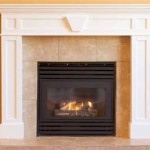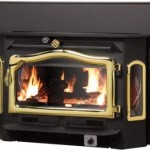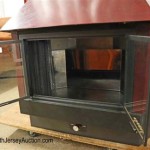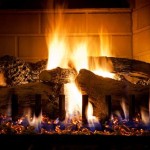Best Kind of Wood To Burn In A Fireplace
Selecting the right type of wood for a fireplace is crucial for ensuring a safe, efficient, and enjoyable burning experience. The optimal choice depends on factors such as heat output, smoke production, ease of splitting, and availability. Different wood species possess varying properties that impact their suitability for fireplace use. Understanding these characteristics is essential for maximizing the benefits and minimizing the drawbacks of burning wood as a heat source.
The process of burning wood involves combustion, a chemical reaction that releases heat and light. Dry, seasoned wood burns more efficiently than green wood, which contains a high moisture content. Moisture hinders combustion, resulting in lower heat output, increased smoke production, and the potential for creosote buildup in the chimney. Creosote is a flammable byproduct of incomplete combustion that can pose a significant fire hazard. Therefore, selecting well-seasoned wood is a primary consideration.
Hardwoods and softwoods are the two main categories of wood, categorized based on their density and origin from deciduous or coniferous trees respectively. Hardwoods generally offer higher heat output and longer burn times due to their denser structure. Softwoods, on the other hand, ignite more easily and burn faster, making them suitable for kindling or starting fires. However, softwoods typically produce more smoke and creosote compared to hardwoods.
Hardwood Advantages: Heat Output, Burn Time, and Clean Burning
Hardwoods are sourced from deciduous trees, which shed their leaves annually. These trees typically grow slowly, resulting in denser wood with a higher energy content. This translates to greater heat output per unit of volume compared to softwoods. Common examples of hardwoods suitable for fireplaces include oak, maple, ash, beech, and birch. Each species possesses unique characteristics, but they generally share the advantage of providing a long-lasting and efficient burn.
Oak is often considered the gold standard for firewood. It is dense, burns slowly, and produces a significant amount of heat. Oak also tends to burn cleanly, minimizing smoke and creosote buildup. However, oak can be difficult to split, especially when green, and requires a longer seasoning time compared to some other hardwoods. Red oak, in particular, can take up to two years to properly season.
Maple is another excellent choice for firewood. It burns hot and clean, similar to oak, but is generally easier to split. Maple also seasons relatively quickly, typically within one year. Different varieties of maple, such as sugar maple and red maple, offer slightly varying properties, but all are well-suited for fireplace use. Ash is another hardwood readily available in many regions. It splits easily, seasons quickly, and burns with a steady flame and minimal smoke.
Beech provides excellent heat output and burns for a long time, similar to oak. It is known for its clean burning properties, producing little smoke and creosote. Birch is known for its attractive flame and pleasant aroma. It burns relatively quickly compared to oak or maple, but still offers good heat output. Birch bark is also an excellent natural fire starter.
The clean burning characteristics of hardwoods are particularly important for minimizing the risk of chimney fires. Hardwoods produce less creosote than softwoods, reducing the buildup of flammable deposits in the chimney. Regular chimney inspections and cleaning are still essential, regardless of the type of wood burned, but using hardwoods can significantly reduce the frequency and severity of chimney maintenance.
Softwood Considerations: Kindling, Quick Starts, and Potential Drawbacks
Softwoods are sourced from coniferous trees, which typically retain their needles year-round. These trees generally grow faster than hardwoods, resulting in less dense wood with a lower energy content. While softwoods are not ideal for sustained burning, they can be useful for kindling and starting fires. Common examples of softwoods include pine, fir, spruce, and cedar.
Pine is readily available in many regions and is often used as kindling due to its high resin content. The resin ignites easily, providing a quick start to the fire. However, pine burns quickly and produces a significant amount of smoke and creosote. Therefore, it is generally not recommended for sustained burning in a fireplace.
Fir and spruce are similar to pine in their burning characteristics. They ignite easily and burn quickly, making them suitable for kindling. However, they also produce a relatively high amount of smoke and creosote. Cedar is prized for its aromatic properties and is often used in closets and chests. While it can be burned in a fireplace, it burns quickly and produces a considerable amount of smoke. Cedar is best used sparingly, if at all, in a fireplace.
The high resin content of softwoods contributes to their rapid ignition but also increases the risk of creosote buildup. When resin burns, it produces volatile compounds that condense on the cooler surfaces of the chimney, forming creosote. Regular burning of softwoods can accelerate creosote accumulation, increasing the risk of a chimney fire. If softwoods are used, it is crucial to monitor the chimney more frequently and schedule regular cleanings to prevent creosote buildup.
Despite the drawbacks, softwoods can be a valuable resource for starting fires. Their easy ignition and quick burning properties make them ideal for getting a fire going quickly. Combining softwoods for kindling with hardwoods for sustained burning can be an effective strategy for managing fireplace fires.
Seasoning and Moisture Content: The Key to Efficient Burning
Regardless of whether hardwood or softwood is chosen, proper seasoning is paramount for achieving efficient burning and minimizing smoke production. Seasoning refers to the process of drying wood to reduce its moisture content. Green wood, freshly cut wood, contains a high percentage of moisture, often exceeding 50%. Burning green wood requires significant energy to evaporate the water, reducing the heat output and increasing smoke production.
Well-seasoned wood, on the other hand, has a moisture content of 20% or less. Burning seasoned wood releases more energy, produces less smoke, and minimizes creosote buildup. The seasoning process typically involves splitting the wood and stacking it in a location with good air circulation. The amount of time required for seasoning depends on the type of wood, the climate, and the stacking method. Hardwoods generally require a longer seasoning time than softwoods.
The ideal method for stacking wood is to elevate it off the ground on pallets or racks, allowing air to circulate underneath. Stacking the wood loosely, with gaps between the pieces, also promotes air circulation. Covering the top of the woodpile with a tarp or roof can protect it from rain and snow, while allowing the sides to remain open for ventilation. The best location for seasoning wood is in a sunny, windy area.
Determining whether wood is properly seasoned can be done using various methods. A moisture meter can provide an accurate reading of the wood's moisture content. The sound of the wood when two pieces are struck together can also provide an indication of its dryness. Seasoned wood will produce a sharp, hollow sound, while green wood will produce a dull, thudding sound. Visually, seasoned wood will often have cracks on the ends and will be lighter in weight than green wood.
Burning only seasoned wood is crucial for fireplace safety and efficiency. It is an important step in avoiding dangerous chimney fires and maximizing the heating potential of your fireplace.

What Is The Best Wood To Burn In Your Fireplace Does It Matter

The Best And Worst Types Of Wood For Burning In Fireplace Bob Vila

What S The Best Wood To Burn For My Fireplace Capitol Chimney

What Is The Best Wood For Fireplace Comfort All Winter Long

Best And Worst Woods For Fireplaces

Best Wood To Burn 5 Effective Guides Follow

The Best Kinds Of Wood For Indoor Fireplaces And A Few To Never Burn Indoors Manual

Best Worst Kinds Of Wood To Burn In A Fireplace Ultimate Home Comfort

Best And Worst Woods For Fireplaces

The Best And Worst Types Of Wood For Your Burning Fireplace Dreifuss Fireplaces
Related Posts








